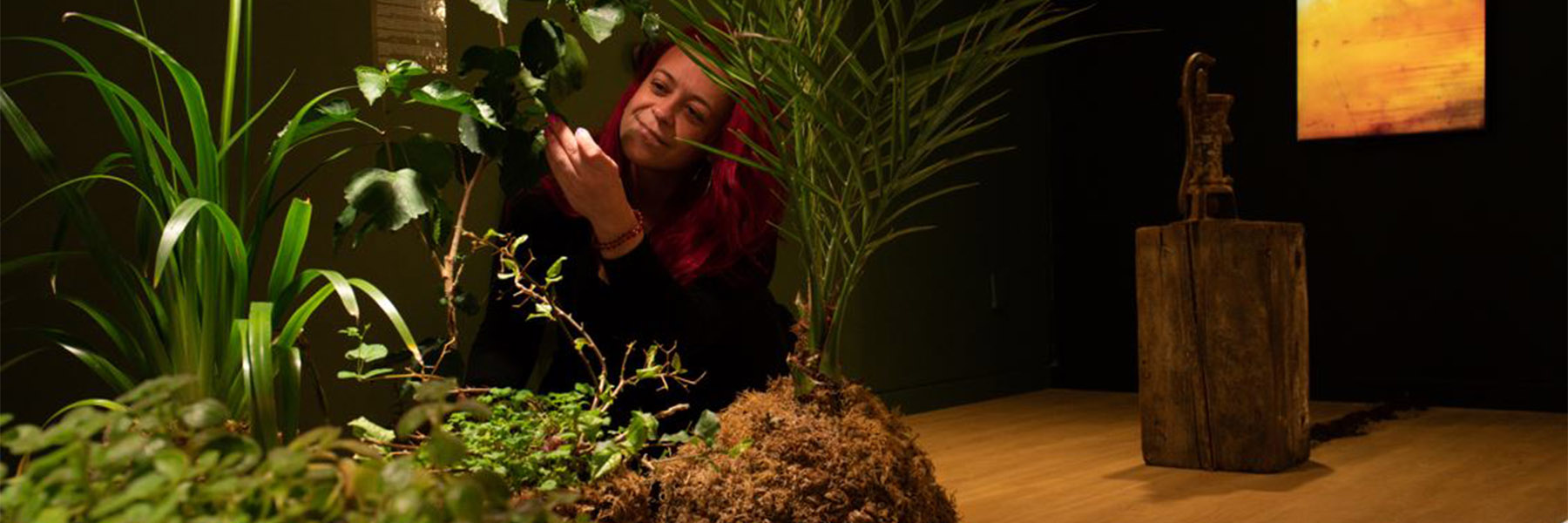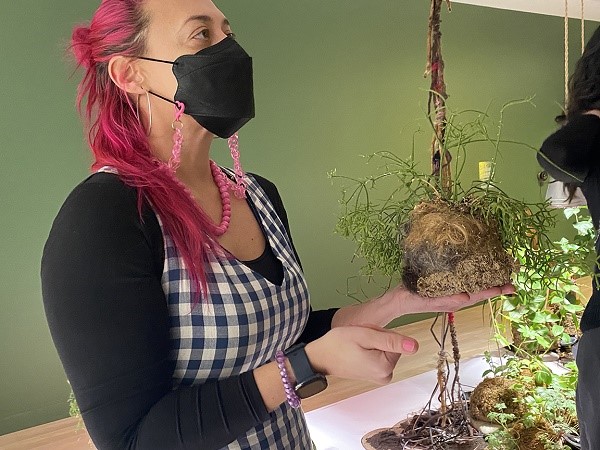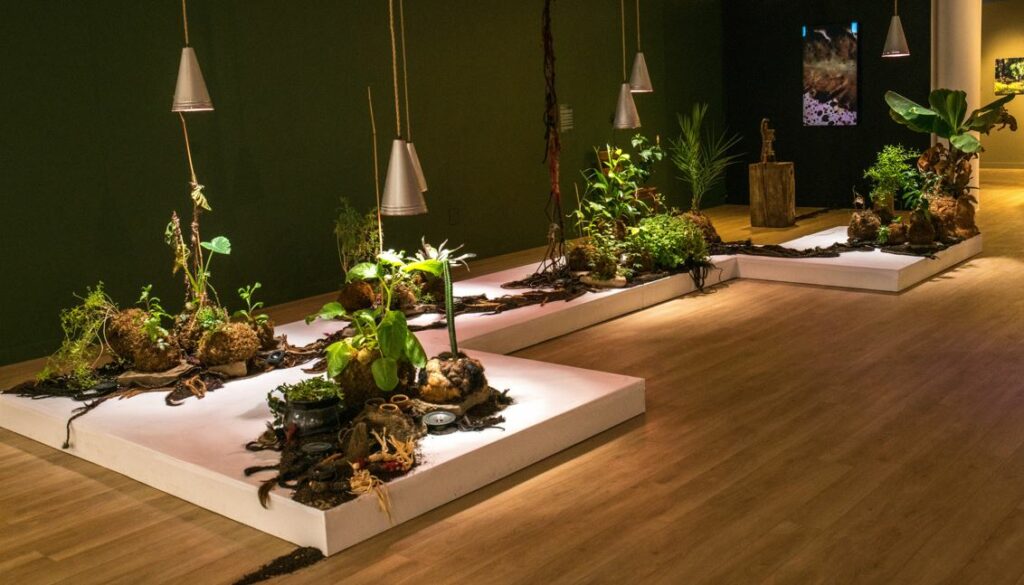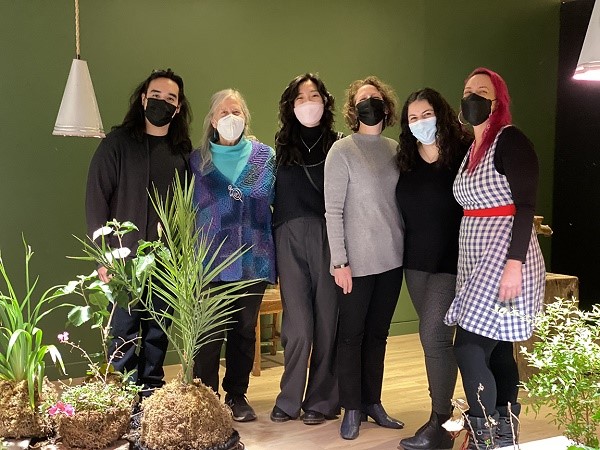
Alexandra Gelis, an award-winning artist and PhD student in the Environmental Studies Graduate Program at York University, is featured in ArtworxTO: Toronto’s Year of Public Art 2021-2022, as part of HOME(LAND): Terra Firma.
Work by Gelis is highlighted in the second of three multimedia exhibitions examining how land is connected to people’s sense of identity, belonging and home across and between races, regions, cultures and nations. Running until Sunday, May 29 at ArtworxTO Hub WEST in the Cloverdale Common Cultural Hub at Cloverdale Mall, Gelis was invited by HOME(LAND) exhibit curator Claudia Arana to feature her installation With – Living: Migrant Relations.
“‘With’ and ‘living’ are two words in Greek that define symbiosis,” says Gelis. “It describes an ecological relationship between two organisms from different species – sometimes, but not always, beneficial to both parties.”

The installation exhibits plants, soil, bacteria and stories of migration in a constant biological, political and reciprocal relationship. It encompasses immersive sculptural spaces, using video projections and intricate sound designs reflective of the natural sounds and environment plants originate from. It also explores the traditional hair braid designs where enslaved African women in the 17th century hid their seeds used to help map their escape routes to San Basilio de Palenque.
"Through the stories of communities who mapped escape routes to freedom, this exhibit shows the resilience of people, communities and how hair is important across many different cultures,” notes Gelis. “It explores how we change with plants through correlations and co-belonging.”
Offering a sensory experience for visitors, guests are invited to smell, water and touch the plants featured in the exhibit which includes sacred plants such as tobacco, coca and corn from South America as well as edible plants such as taro, cassava and oregano. These plants have been donated to Gelis by relatives and supporters of the project, contributing to the stories of immigrants who have travelled to Canada with plants and seeds that tell their family’s journey, traditions and history of their native country.

An old, functioning water pump is featured in the exhibit, revealing the internal chemistry of plants that have been exposed to photographic emulsion and direct sunlight for many hours. This process is called phytography and offers a unique view of plants molecular and chemical exchange. The project invites visitors to interact with the hand pump and to play with the pace of the film. The installation also features a chair where visitors can sit, write and draw their experiential stories with plants, as well as feel the vibration of the soundscapes in their body.
From this plant-based research-creation, Gelis explores and re-creates ecologies that take shape between plants and people, and between plants and their multi-species symbio-politics interrelationships.
“Through elements like soil and air as well as through plants and animals, there is another voice which can provide a new way to write history. Plants help us to resist, to have better health with medicinal plants such as those given to us by our grandmothers. If we take care of plants, soil and water, we take care of us.”
With – Living: Migrant Relations, represents the semiotically layered resistant and fluid knowledge implied in migration, as well as the implementation of medicinal plants to nourish and heal the body, the land, the spirit, the non-living, the non-human elements in solidarity with different ways of being. The work aims to re-narrate plants as protagonists that shape human history.
“In a similar way that we move as migrants, a plant also migrates...they move by wind, water, birds, but also in our hands. The exhibition has many levels, one being talking about history and recreating history through the voices of plants, animals, soil and the air,” says Gelis.
Gelis has shown work through many multimedia events and festivals across the world including Ethiopia and Colombia and has worked with Latin American American, Indigenous, transexual and at-risk youth communities across multiple cultural projects. This is the first time her work is being displayed in a mall, a non-traditional art setting. Gelis welcomes visitors to connect to their own memories with plants and soil and explore the deeper meaning of their origin, what they represent and how they shaped the journey of migrants by contributing with their writing and drawings in a book that is part of the installation. These reflections along with the installation itself will be incorporated into Gelis’ last project as part of her PhD.

“Alexandra [Gelis] draws upon her own experiences as an immigrant as well as the curiosity of a scientist, the observational skills of a plant lover, the aesthetic sensibility of a visual artist, the ingenuity of a tech geek, the listening skills of a gatherer of stories,” says Gelis’ PhD supervisor and professor emerita at the Faculty of Environment and Urban Change Deborah Barndt.
Gelis and Barndt are also working as co-directors for the Earth to Tables Legacies project alongside Lauren Baker, an alumna of York’s Environmental Studies graduate program.
“Since 2015, we have brought together a small group of food sovereignty activists across big differences – youth and elders, Indigenous and settler, rural and urban, Mexican and Canadian. The exchange of knowledges and practices has culminated in a multimedia website... we are in the final stages of production of an accompanying book, Earth to Tables Legacies: Multimedia Food Conversations Across Generations and Culture, which will be launched in the fall,” adds Barndt.
Learn more about the free public art exhibit.
